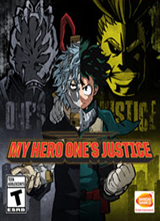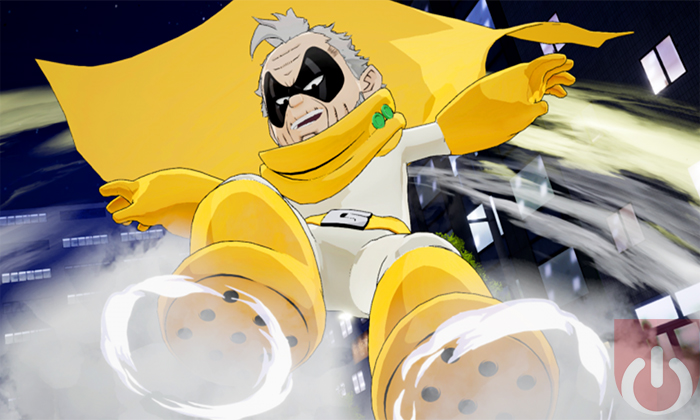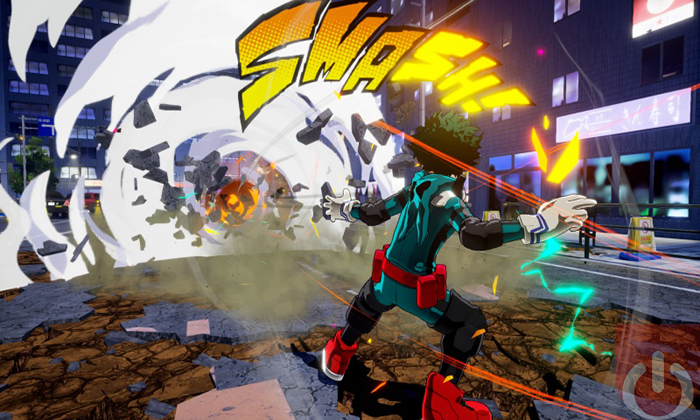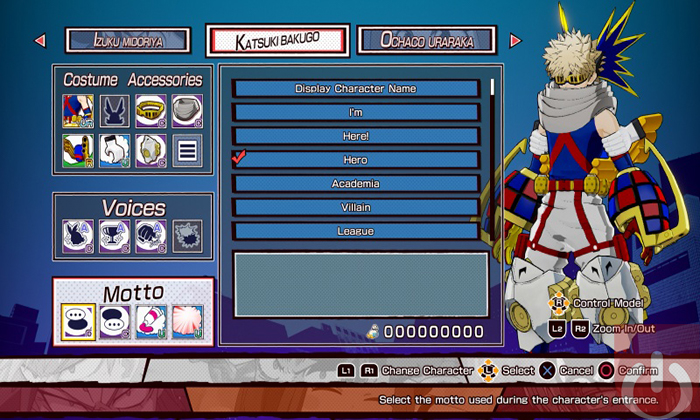My Hero One’s Justice
I sometimes wonder if the developers who make video game adaptations of popular anime, actually watched the shows from top to bottom. Not just enough inspire them to make a game, but actually dissect the source material like their fans do. I am of the belief that most of them do. Though, that’s not to say that their games will be good, just that they at least tried to incorporate as much of the source material as possible. Because of this, when I heard that we had received a review code for My Hero One’s Justice, my ears perked up for the wrong reasons…
Developed by Byking, My Hero One’s Justice is a fighting game based off the Shonen Jump anime My Hero Academia. It follows young Midoriya – a normal teenager who’s granted a portion of the world’s strongest hero’s power – and his classmates as they attend a school to become licensed heroes. My Hero is an action-packed show, with an emphasis on character growth; it provides a coming of age story like Naruto but with a greater focus on the school environment. Not only does Midoriya and his classmates struggle to keep up with their difficult training, they also must deal with their insecurities, personal rivalries, and a group of villains that frequently attacks the fledgling heroes at the most inopportune times. Basically, this show if far more than just a bunch of characters throwing punches. Ironically, the same can be said of the actual fighting. In a world where almost everyone has special abilities (called Perks), combat is more akin to chess. Each character tries to outwit their opponents using their skills in imaginative ways. Even non-combative Perks can be used to subdue someone if given the right treatment.
My Hero Academia can be, at times, a really involved anime. Because of this, I was looking forward to My Hero One’s Justice. The hope was that it would reproduce the drama and chess like combat found in the anime. Unfortunately, Byking chose to go the typical anime fighter route for the sake of accessibility. The gameplay revolves around team-based fights where anyone can pick up the controller and button mash their way to a flashy combo. Worse still, are the auto combos as they come with unblockable moves. This option typically offers finishers that don’t allow for lengthy attack strings and/or are weaker damage wise. The idea is to provide an advantage to newer players, making up for their lack in skill with easy to do moves. In My Hero One’s Justice, the advantage is so big that there’s little incentive to learn the longer (supposedly more powerful) combo strings; the automatic attacks and unblockable moves are strong enough to temp better players to use them. To be real, the game shouldn’t have this option at all considering most of the moves are done by just tapping the melee attack button.
I understand why Byking would do this. Because the anime is wildly popular, they were looking to attract people who may or may not have been into fighters. A complicated move list, strategic elements, and a plethora of combos might have pushed the fans who just wanted to play as their favorite characters away from the game. That said, with no real attempt at mixing up the combat, My Hero One’s Justice feels like a dumbed down Naruto Ultimate Ninja title. I quickly learned that the fights came down to a fast-paced rock/paper/scissors meta – a basic attack loses to a charged attack and a charged attack loses to a counter attack, etc. When someone launches into an attack string, you’d stop them with the opposing move. Two assist characters are there to spice things ups, adding hits that would allow for longer combos. But ultimately there isn’t much to learn here.
It is fun to watch though. Anytime I saw Deku (Midoriya) getting ready to sacrifice a finger in battle to blow an enemy into a wall, I would nerd out. Matches would see both fighters knocked about the environment, even traverse up walls, all while using explosive abilities. My Hero One’s Justice certainly looks the part. If the fighting wasn’t so repetitive, it could have been a really entertaining. Thankfully, the story mode is decent. It’s oddly put together though, starting near the end of Season 2 and ends with the huge battle between All Might and All for One that concludes Season 3. This somewhat works for long time fans because it jumps to the more interesting bits. The end of Season 2 isn’t a good place to start for newcomers though, as they won’t know the why these characters are important (besides on being good and the other being bad). The plot is dulled out via small photos with bits of narrative to help explain what is happening, so newcomers won’t be completely lost. New fan or not, being able to choose the good or evil side of the campaign is a plus. Getting the villain’s perspective was especially awesome given how the show is mostly depicted from the heroes’ side of things.
My Hero One’s Justice also offers the traditional versus modes. Fighting online with friends is where it’s at; I ended up having fun after I stopped being a snob and just enjoyed the over-the-top action. I can see some people gravitating to the Mission mode. Here, they’ll be able to choose which character to take on missions (fights) where hitting certain requirements will unlock customization items. It’s a nice touch, though most characters will end up looking like they rummaged through the other heroes’ laundry to find a new costume. It would have been better if there were more custom gear (not seen in the show) or the ability to create a new hero. The Mission mode can be entertaining. It isn’t as engaging as it could’ve been though.
As a stepping stone for future games, My Hero One’s Justice isn’t bad. It does allow fans to play as their favorite characters from the anime, regardless of their skill level. It also looks the part, with nice cell-shaded characters and environments. That said, it quickly becomes mundane for the more experienced fans of the genre. It might have been better for Byking to go the way of Naruto to Boruto Shinobi Striker, Dragon Ball FighterZ, or even Smash Bros. given their large roster of heroes and villains. Whatever the case, in the future, I hope that Byking is able to develop My Hero into a fighter that presents the deep combat found in the show. As it stands, My Hero One’s Justice is a little to shallow for my liking.
Gameplay:
6
My Hero One’s Justice can be entertaining; just being able to play as show’s heroes and villains is thrilling. Those thrills, however, dissipate after one learns the ends and outs of the shallow combat systems.
Graphics:
8
For the most part, the game looks like its anime counterpart.
Sound:
7
The voice work, sound effects, and music should be well received.
Replay Value:
7
Playing with friends is fun. The mission mode also has legs. Really, it comes down to how much you enjoy the combat.
Final Score:
7



